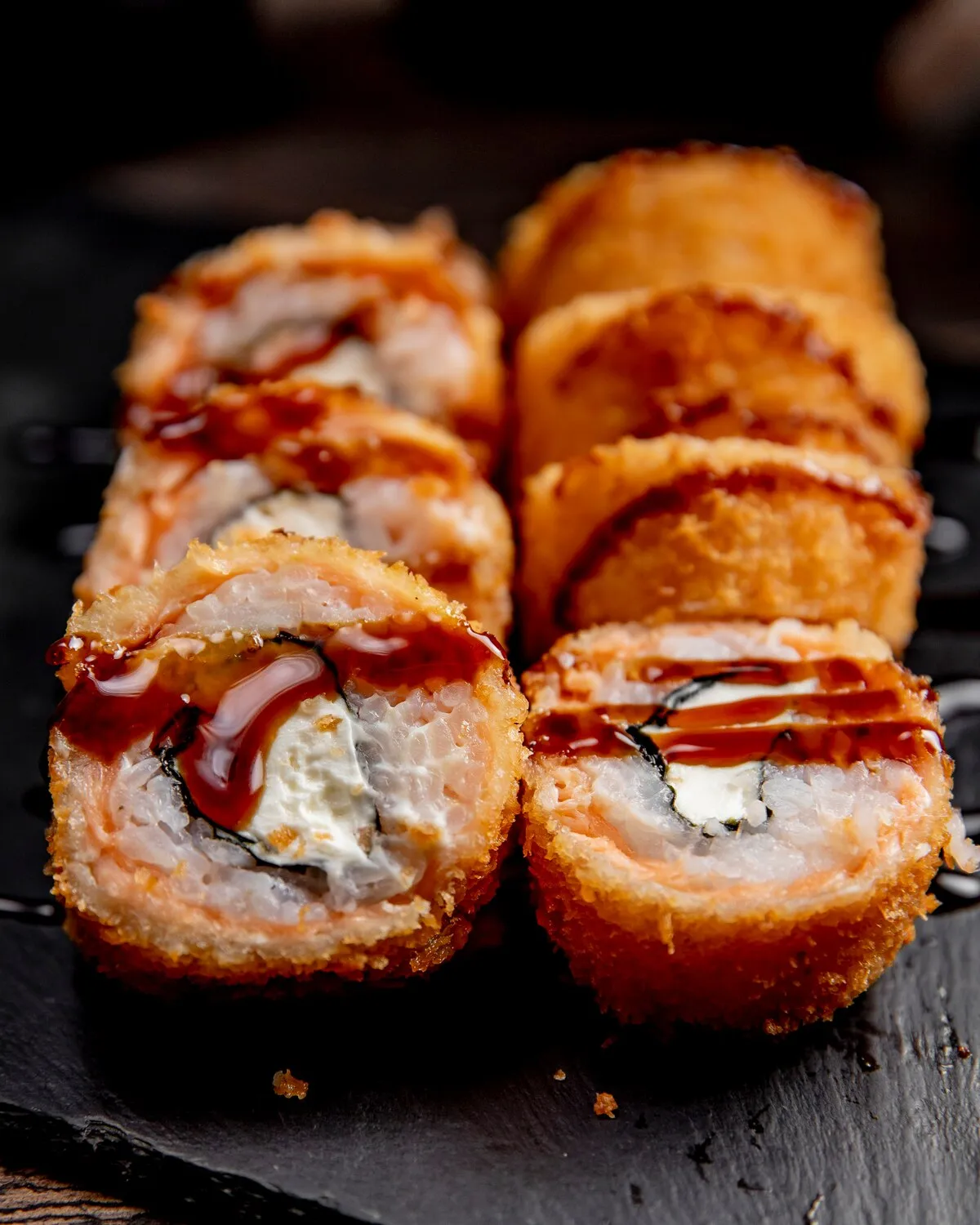
Hot Roll
Breaded and fried sushi roll.
Nutrition Facts
* The % Daily Value (DV) tells you how much a nutrient in a serving of food contributes to a daily diet. 2,000 calories a day is used for general nutrition advice.
Hatsuki
The Hot Roll, a deep-fried sushi roll, is a relatively modern invention, born from the American adaptation and fusion of traditional Japanese sushi. It emerged as a way to cater to Western palates and introduce sushi to a broader audience who might be hesitant to try raw fish. The technique of deep-frying adds a textural and flavor element that is not traditionally found in Japanese sushi.
Hot Rolls reflect the Americanization of sushi, representing a departure from traditional Japanese culinary practices and a willingness to experiment with new flavors and techniques. They often appear on the menus of American sushi restaurants alongside more traditional offerings.
Adaptation and Innovation
Hot Rolls showcase how immigrant cuisines are often adapted to local tastes, leading to the creation of new and unique dishes. They represent a culinary bridge between Japanese tradition and American innovation.
Accessibility and Popularity
The cooked ingredients and deep-fried preparation make Hot Rolls a more approachable option for those unfamiliar with raw fish, contributing to the widespread popularity of sushi in the United States.
The Hot Roll offers a compelling blend of textures and flavors, combining the delicate taste of sushi with the crispy, savory character of a deep-fried dish.
The primary flavors consist of the creamy textures of avocado, the fresh taste of cucumber, and the salty, umami-rich nori seaweed. Common fillings may include cooked seafood like imitation crab meat, shrimp, or smoked salmon. The breading, typically panko breadcrumbs, provides a crunchy exterior. Sauces like spicy mayonnaise, eel sauce (unagi sauce), and sweet chili sauce often enhance the overall flavor profile with sweetness, spice, and umami.
Temperature Control
Maintain a consistent oil temperature (around 350°F or 175°C) for even cooking and optimal crispness. Too low, and the roll will absorb excess oil; too high, and it will burn before cooking through.
Rolling Technique
Ensure the sushi roll is tightly rolled before breading to prevent it from falling apart during frying. Use a bamboo sushi mat to help achieve a firm and compact roll.
Breading Process
Use the standard breading procedure: flour, egg wash, and panko breadcrumbs. This ensures proper adhesion and even coverage. Double breading can add extra crispness.
Sauce Selection
Experiment with different sauces to complement the flavors of the roll. Spicy mayonnaise, eel sauce, and sweet chili sauce are popular choices.
Explore additional Sushi dishes and restaurants
Explore SushiDiscover top dining spots and culinary experiences in Rio Preto.
Explore Rio PretoLearn more about the food culture, restaurant scene, and culinary heritage of Brazil.
Explore Brazil